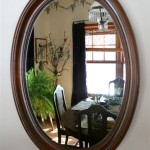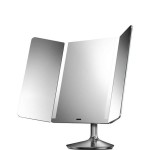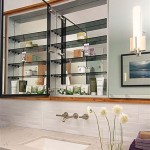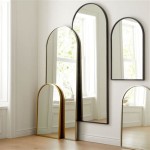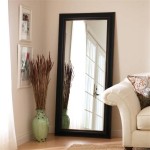How To Adjust Side Mirrors For Parallel Parking
Parallel parking is a common driving maneuver requiring precision and spatial awareness. Properly adjusted side mirrors play a crucial role in executing this maneuver safely and efficiently. While many drivers adjust mirrors for general driving, optimizing them specifically for parallel parking offers significant advantages.
The conventional wisdom of adjusting side mirrors to barely see the sides of the vehicle creates blind spots, particularly problematic during parallel parking. This method often leads to over-reliance on the rearview mirror, limiting the driver's peripheral vision and increasing the risk of collisions.
The optimal mirror adjustment for parallel parking aims to eliminate blind spots and provide a clear view of the rear corners of the vehicle and the adjacent lane markings. This adjustment requires a departure from the standard mirror settings and focuses on maximizing the field of vision to the sides of the car.
The Society of Automotive Engineers (SAE) recommends a mirror setting technique that significantly enhances visibility and minimizes blind spots. This method, often referred to as the "blind spot elimination" or "enhanced mirror setting" technique, requires specific adjustments to both the driver-side and passenger-side mirrors.
To adjust the driver-side mirror using the SAE method, begin by leaning the head against the driver-side window. Adjust the mirror outwards until the side of the car is just barely visible in the mirror's right edge. This positioning extends the field of vision beyond the conventional setting and reveals more of the adjacent lane.
For the passenger-side mirror, lean towards the center console until the head is approximately in line with the rearview mirror. Adjust the passenger-side mirror outwards until the side of the car is barely visible in the mirror's left edge. This adjustment, similar to the driver-side mirror, expands the view down the passenger side of the vehicle.
These adjustments will likely feel unusual initially, as they display significantly less of the car's side and more of the surrounding lanes. This broader view is precisely the objective, providing a comprehensive perspective of the areas crucial for safe parallel parking. It dramatically reduces the driver's reliance on looking over their shoulder and minimizes blind spots.
Once the mirrors are correctly adjusted, practicing the parallel parking maneuver is essential. Find a safe, open space to practice. Begin by positioning the vehicle parallel to the car in front of the empty parking space, maintaining a distance of approximately two to three feet. The rear bumpers of the two vehicles should be roughly aligned.
Put the car in reverse and begin backing up slowly while turning the steering wheel fully towards the parking space. Observe the side mirrors to monitor the proximity to the vehicles behind and in front of the parking space. The adjusted mirrors will provide a clear view of the rear tire's position relative to the curb and the surrounding vehicles.
Once the vehicle is angled into the parking space, begin straightening the steering wheel and continue backing up slowly. Use the side mirrors to maintain awareness of the vehicle's positioning within the parking space and its distance from the curb and other vehicles.
When the vehicle is fully parked, adjust as needed to center it within the space. The adjusted side mirrors will continue to provide a clear view of the surrounding vehicles and assist in making minor adjustments to the parking position.
By adopting the SAE mirror setting technique, drivers can significantly improve their parallel parking skills. The wider field of vision reduces blind spots and provides crucial visual information necessary for precise maneuvering. This, coupled with practice, enhances parking accuracy and reduces the risk of collisions during the process.
While this mirror adjustment is optimized for parallel parking, it also benefits overall driving safety. The increased visibility of adjacent lanes enhances awareness of surrounding traffic and improves lane changes and merging maneuvers. It's recommended to maintain this mirror setting for all driving situations.
Regularly verifying the mirror alignment is important. Minor bumps or adjustments to the seat position can alter the mirror settings. Taking a moment to reaffirm the correct positioning ensures consistent visibility and maintains the benefits of the enhanced mirror setting.
Understanding the principles behind these adjustments, practicing the technique, and integrating it into regular driving habits can transform parallel parking from a challenging maneuver into a confident and controlled action.

How To Adjust Your Mirrors Avoid Blind Spots

Seeing Into Blind Spots Clever Trick To Properly Align A Car S Side View Mirrors 99 Invisible

Parallel Parking 2 Tips To Make It Easier
What Are Some Parallel Parking Tips Quora

Can You Adjust Your Mirrors During Parallel Parking Learn Driving Tips

How To Use Your Mirrors When Reversing Car Parks And On The Road

How To Adjust Your Car Mirrors Eliminate Blind Spots The Art Of Manliness
Parallel Parking How To Do It Telford Driving School

The Right Way To Set Your Side Mirrors For Driving

How To Parallel Park In 6 Easy Steps


